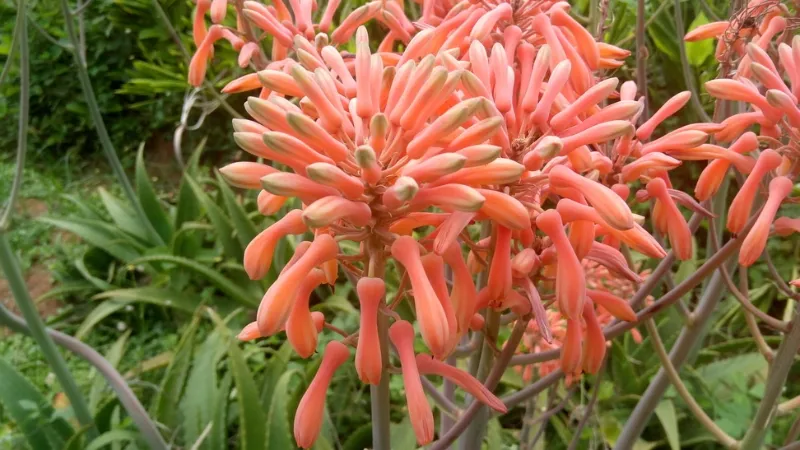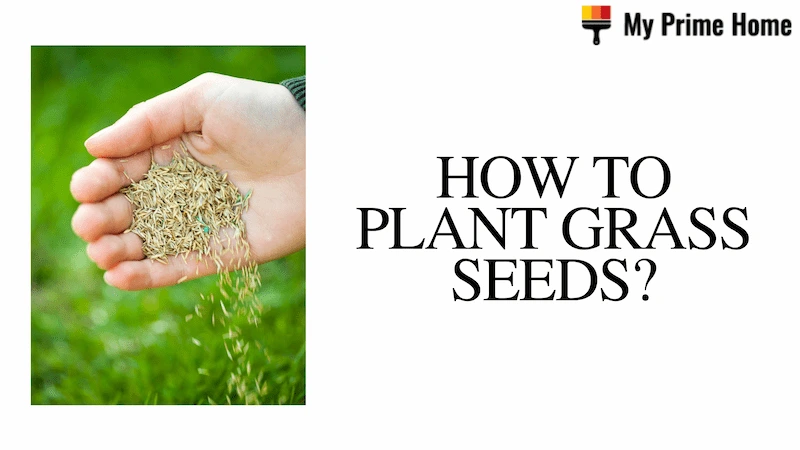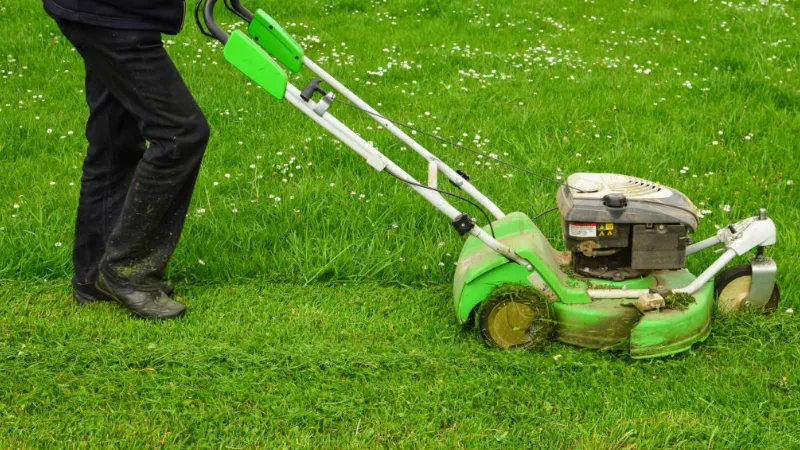Do aloe plants bloom? You’re here for answers, so let’s get straight to it! Follow along as we discuss aloe plant flowering. Here’s everything we’ll cover, up ahead:
Aloe plant blooms rise from an inflorescence that soars above the attractive rosettes. If you see no flowers on aloe plants, it may simply be because the plant is too old to bloom. Mature plants must be at least four years old in order to bloom. It could also be due to cultural issues which are easily corrected and could result in your aloe presenting you with its lovely flowers.
For more details, please keep reading.
Do Aloe Plants Bloom?
That little developing structure in the center of the rosette of succulent leaves is, indeed, a bud!
Unlike monocarpic succulents such as agave, which bloom only once in their lives and then die off, you may get to experience the flowering process in your aloes for many years to come, with appropriate caretaking.
- Anatomy
Rather than opening to reveal one large flower, the bud you spotted will continue to grow into a long stalk to form a flower spike or raceme.
When the plant reaches its full height, individual buds will appear at the top or spaced out along the stem in a bottlebrush, spray, or cone-shaped pattern.
Racemes on smaller species like Aloe barbadensis, or aloe vera, can reach about 12 to 18 inches in height, whereas larger species typically produce taller racemes – sometimes well over 24 inches.
Species such as A. arborescens, the candelabra or krantz aloe, usually bloom from each individual crown at the same time, forming a set of spikes with stunning red-orange blooms.
The aloes most frequently display the colors red and orange, but other hues like yellow, coral, or pink are also possible.
Each flower is bell- or tube-shaped, and usually ranges between three-quarters of an inch to about two inches in length.
Slow-growing succulents take some time to reach maturity; flowering usually doesn’t start until the third or fourth year of the plant’s life.
Once they reach maturity, they typically produce at least one raceme per year and occasionally up to two or more blooms per growing season.
While indoor specimens may bloom at any time or not at all, those grown outdoors have a better chance of budding, which typically happens in the summer.
It’s generally less likely for houseplants to produce flowers unless adjustments are made to the average indoor growing conditions.
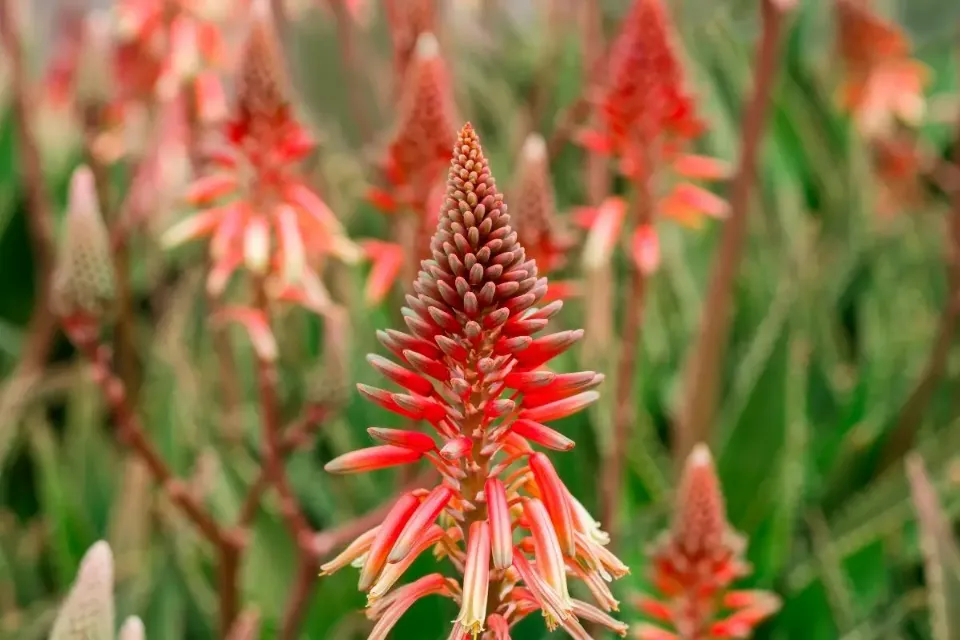
What to Do With Aloe Vera Flower?
You probably know that the aloe vera plant is one of the world’s healthiest and most valuable plants and that you can use its leaves as a remedy for many things. The juice can do wonders for your gut health and immune system, while the gel from the leaves can be used to treat cuts, rashes, and sunburns.
Aloe Plant Flower – the Health Benefits
As the plant is potent regarding the health benefits it brings, it’s only logical to assume the flower is too. And if that’s what you assumed, you’re correct. There are numerous ways to use the aloe flower to support better health, and it is just as magical as its leaves.
Full of Vitamins and Minerals
The aloe vera flower is rich in minerals like magnesium, iron, zinc, and calcium as well as vitamins like vitamins A, B, and C. These are all necessary for your body to function normally.
Full of Antioxidants
The aloe flower is a powerful antioxidant in addition to being a source of vitamins and minerals. If you don’t know much about antioxidants, they are crucial for defending your body against free radicals and keeping you healthy.
It’s Anti-Inflammatory
You’ll be relieved to learn that the aloe plant flower has anti-inflammatory properties if you struggle with bodily inflammation processes. That said, it can help you fight against inflammation and get rid of it.
It’s Great for Your Skin
Since people have been using aloe vera gel for years to heal their bodies and treat skin conditions like acne and eczema as well as other issues, it is well known that it is ideal for any skin-related issues.
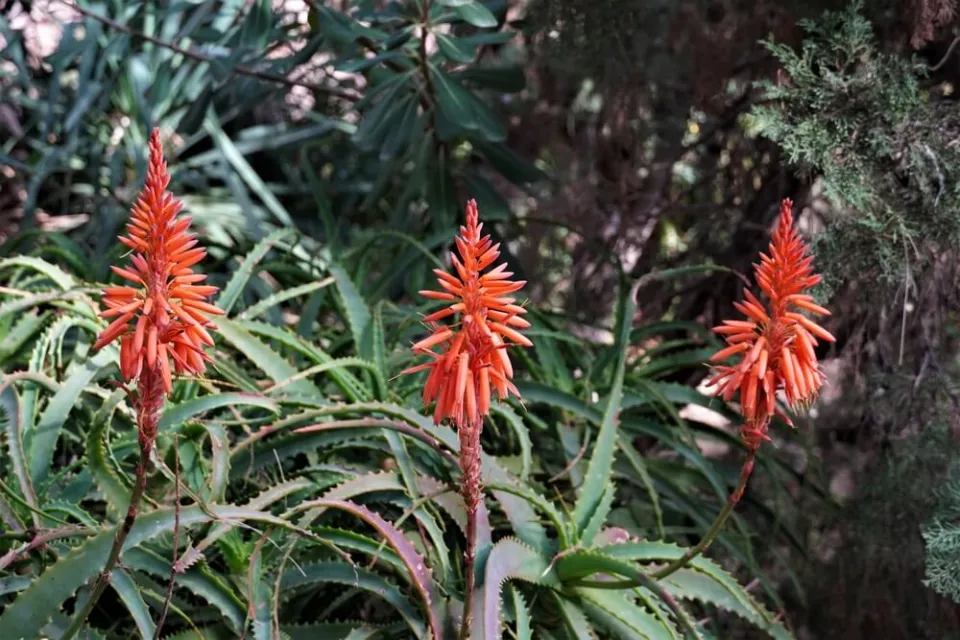
How to Grow Aloe Vera Flowers?
Most Aloe Veras don’t easily bear flowers mainly because of their age and their growing environment.
If your Aloe Vera plant is old enough and still doesn’t bloom, the reason is most likely due to environmental aspects.
Many aloe vera growers don’t get to see the colorful flowers that appear from the plant because they don’t give their plants enough sunlight.
Therefore, if your plant is older than four years old and you want it to bloom the following spring, you should first repot it in the autumn.
Here’s a detailed guide on how to grow Aloe Vera flowers:
Provide Plenty of Sunlight
Natural habitats for aloe vera plants include dry, rocky, and arid areas with bright sunlight for the majority of the day. Placing your Aloe Vera plant somewhere where it can receive uninterrupted natural light for the majority of the day will encourage it to bloom.
On a window sill, for example, where sunlight enters directly. You don’t really want shade in that spot because again, Aloes love sunlight!
Different areas of your home may get more or less sunlight depending on the time of day. This means that if you grow aloe vera indoors, you’ll need to move the plant around frequently to ensure it gets the daily sunlight it needs.
The likelihood of flowering is very high if your aloe vera gets a lot of sunlight. You can also decide to grow your aloe vera plant outdoors during the summer. In fact, we highly recommend growing this plant outside!
The chances of Aloe Vera flower blooming will be higher if the same desert-like growing conditions of their natural habitat are imitated in your garden.
The range of 70°F to 85°F is the ideal temperature range for Aloe Vera flowers during the day. The ideal temperature at night is no lower than 60 degrees Fahrenheit.
Giving the Right Temperature
While Aloe Vera plants grow well in bright light, giving your plant too much ‘intense’ sunlight can harm your plant.
You will know if your plant is receiving too much, intense sunlight when you see its foliage starts to wrinkle.
Bring your Aloe Vera plant to a shaded area as soon as you notice wrinkling or even brown spots on the foliage.
Use a small fan to improve air circulation if your aloe vera plant is indoors. Along with controlling the temperature, the fan will prevent mold and mildew from growing on your aloe vera.
Watering
You don’t want to frequently water your aloe vera plant. The fleshy leaves of the aloe vera plant can become damaged if you let it sit in soggy potting soil for an extended period of time. and later make them all mushy and soft, down to the roots.
You would want to wait for the topsoil of the potting soil to dry entirely before you give your plant a drink again.
Fertilizing
Your aloe vera plant will most definitely bloom if it receives plenty of sunlight. But if you want to further encourage Aloe Vera flowers to bloom, you would want to feed your plant with some balanced fertilizer.
To prevent fertilizer burn, dilute the recommended dosage of fertilizer by half. In a perfect world, you would feed your plant in the early spring and again in the middle of the summer.
Water your plant thoroughly before fertilizer application to prevent root system damage. Additionally, you need to thoroughly water your plant once more after feeding it in order to remove any excess salts that might be harmful to it.
Then you should repot your Aloe Vera once every couple of years to refresh the potting soil and aerate the plant’s roots. Repotting also promotes blooming, so keep that in mind.
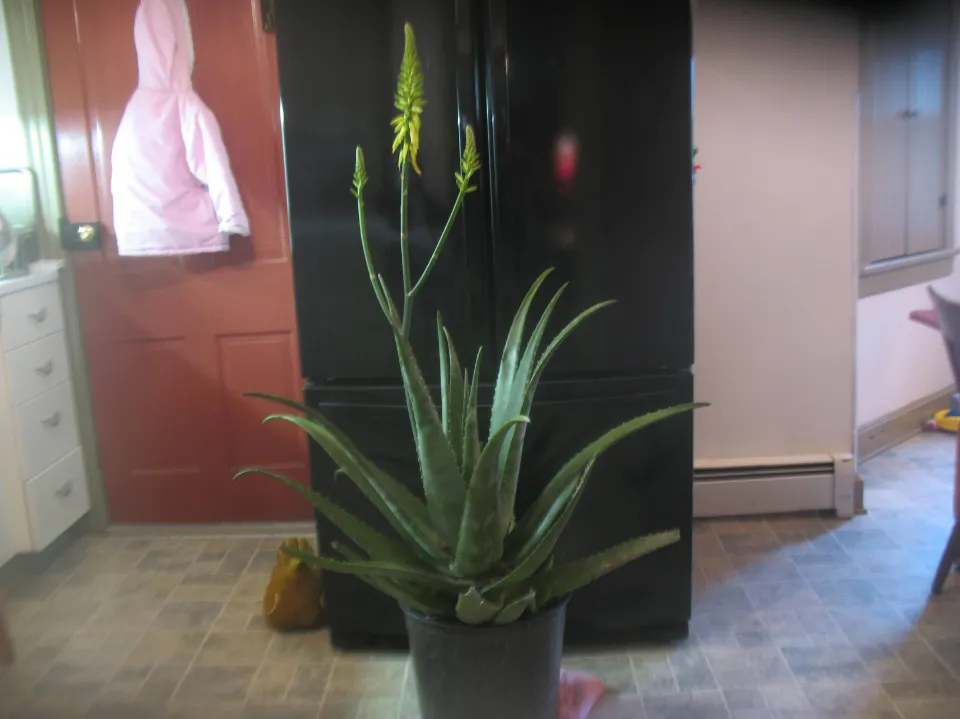
Care Tips
You might feel pressured to provide more water once the buds start to form. But stick to a more regular schedule because succulents rarely need frequent watering.
Depending on where and whether your aloe has received any rain, this may change. Only water indoor plants once the ground feels dry a few inches below the surface.
Make sure to add enough water to completely moisten the soil and to allow any extra to drain off. Saucers that may be hiding under pots should be emptied.
In the absence of rain, water outdoors no more frequently than once per week.
The succulent must support its racemes after they have emerged, just as ample sunlight is necessary to encourage flowering.
A minimum of six, but ideally eight, hours of sunlight should be provided each day. As was already mentioned, moving an indoor specimen outside can be useful in the right weather.
It’s a good idea to add a fertilizer spike or a light application of granular or liquid fertilizer during the flowering phase if you’re a little late to the game and missed your chance to fertilize before budding began.
Blooms typically have a long lifespan of several weeks.
The raceme will eventually sag and turn brown. At the top, seed pods will form and eventually dry out and burst open. At this time, seeds can be collected if you choose to do so. Cut spent flower stalks off at the base if necessary to deadhead.
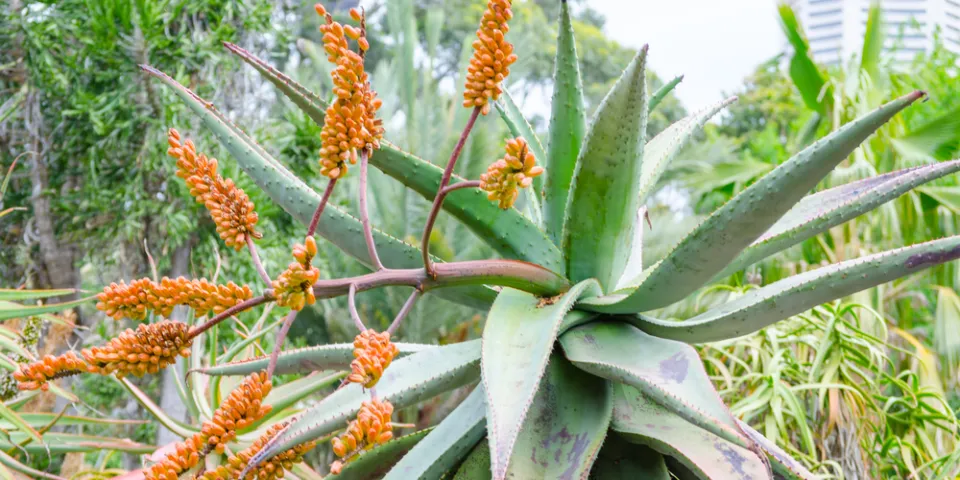
FAQs
What Are the Uses of Dried Aloe Vera Flowers?
Dried Aloe Vera flowers are essentially useless.
You can enjoy the flower until it dries, and they merely enhance the plant’s beauty.
The real benefit of dried aloe vera flowers is that you can easily collect the plant’s seeds if you wait until they are completely dry.
Later, you can use the seeds to replant your plant.
Aloe Vera seeds can be saved and then used to create gifts for your loved ones.
Or, once you collect the seeds, you can grab the dried flowers and put them in your compost bin.
How to Harvest and Dry Aloe Vera Flowers?
When your aloe vera plant has finished flowering and starts to dry, cut off the flower stalks from the bottom or base because they won’t grow back and will only continue to absorb nutrients from the soil.
The Aloe Vera plant won’t be harmed by this procedure; in fact, it will be encouraged to produce more leaves. The harvested Aloe Vera flowers can be dried by simply placing them in the sun for a few hours each day for two to three days.
Can You Eat Aloe Vera Flowers?
Aloe Vera flower petals are not edible. There is no trustworthy source that can confirm whether humans or animals can eat aloe vera flowers. The gel found inside an aloe vera plant’s leaves is the part that can be eaten. It includes folic acid, B vitamins, vitamins C and E, and other necessary vitamins.
How Often Does An Aloe Vera Plant Bloom?
Once they reach maturity, they typically produce one raceme or more per year, sometimes even twice or more. While specimens grown indoors may bloom at any time or not at all, they have a lower chance of budding, which typically happens in the summer.
Summary: Do Aloe Plants Bloom?
Aloe vera plants only produce flowers when they are fully grown, so you must wait at least four years to see one bloom. But there are also other reasons why this plant is not blooming. The weather might not be ideal; you might be overwatering it, the soil might not be balanced, it might not get enough sun exposure, or it might be too cold. In the US, you can only see it bloom from March to May, so perhaps the timing isn’t right.
Unlike other flowers, the aloe flower is fascinating and lovely. The plant’s stem, which will keep growing until it reaches a certain length, will be the first thing you see. Furthermore, the aloe vera’s flower can be enormous depending on the plant’s size. Bright yellow to fiery orange describe the aloe vera bloom, which is tubular in shape. When it is fully bloomed, it has a gorgeous, mesmerizing appearance and a sweet, lovely scent.
If you have any questions, please leave a comment. My Prime Home tries to give you the best home improvement information. Don’t forget to share the post. Thank you for reading.
